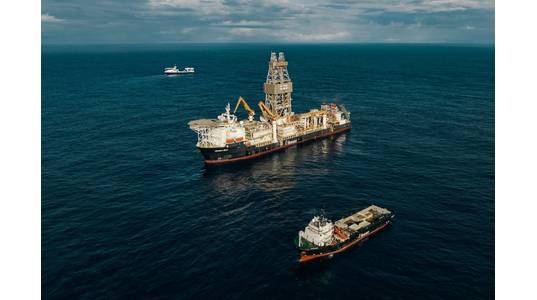
The Metals Company (TMC) said Wednesday it had collected an initial batch of seafloor polymetallic nodules, and transported them up a 4km-long riser system to the surface in the Clarion Clipperton Zone of the Pacific Ocean.
TMC, the explorer of what it says is the world’s largest estimated undeveloped source of critical battery metals, said the move was a historic one, representing the first integrated system test conducted in the area since the 1970s.
"Having successfully completed at-sea construction of the riser system and its integration with the flexible jumper hose and pilot nodule collector vehicle, the dedicated team of 130 crew and engineers aboard the Hidden Gem started initial nodule collection runs, driving the pilot collector 147 meters in one hour on a pre-determined path and collecting 14 tonnes of nodules.
"From inside the collector, nodules were channeled to the jumper hose and into the riser where they were lifted on compressed air in a 12-minute-trip from seafloor to the Hidden Gem [vessel], where the return water was discharged to the midwater column at depth. To date on the current campaign, the collector vehicle has successfully been test-driven approximately 18.1km within NORI-D," TMC said.
Gerard Barron, CEO & Chairman of The Metals Company, said: “With the first nodules making their way from seafloor to surface using an integrated pilot collection system, we find ourselves at a historic moment in the development of this industry. Once again, our strategic partner Allseas have shown why they’re the best in the business when it comes to pioneering offshore engineering and operations. This is just the beginning, and we look forward to sharing more news as the trials and impact monitoring continue this quarter.”
Upon completion of the trials, which require the coordination of 250 people across three vessels, the research teams will undertake post-collection surveys to compare the status of the environment before and after the test, TMC said.
The data collected, together with many terabytes of existing baseline data collected by TMC's subsidiary NORI throughout 16 offshore campaigns, will form the basis of NORI’s application to the International Seabed Authority for an exploitation contract, which the company expects to submit in the second half of 2023.